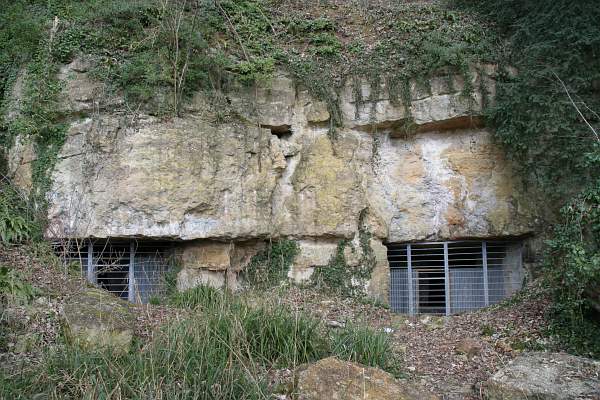Also known as Murhill Upper Mine, Murhill Underground Workings, Winsley Mines, Winsley Rift Mine, there are two entrances to this small underground quarry and both are gated to protect the resident bat populations. The entrances are near the old tramway incline on the uphill side in an old open quarry face. An obvious hole in the floor of the entrance chamber enters a bouldery lower level and provides access to two substantial gulls/rifts although neither can be followed very far. They are orientated at 115 degrees, the same as the majority of the nearby Murhill Rift. The Winsley Sanatorium was built on the site of the open quarry at the top of the hill.
Little is known of these underground or the surface workings here but it is believed that large scale quarrying began in 1803 to supply stone for the Kennet and Avon canal. The extensive quarries to the east of Winsley were large enough to warrent the construction of a inclined plane tramways in 1803 and again in 1826, which allowed the transportation of stone down to the nearby canal. Stone from Murhill was used for the façade of Bristol Temple Meads Station and the Avoncliff aqueduct. The 1841 census recorded 105 labourers working in the stone quarries at Winsley.
Between 1903 and 1906, sewerage pipes and filter beds were installed in the disused passages from the TB recuperation hospital at Murhill. The Winsley Sanatorium is now called the Avon Park retirement village.
The site is an important bat roost and hibernation site for the rare and endangered greater horseshoe bat, Rhinolophus ferrumequinum and at least four other species of bat have been recorded including the lesser horseshoe bat, the whiskered bat, Brandt’s bat and Natterer’s bat. The workings are gated and visits should not be attempted in the winter due to their hibernation.

